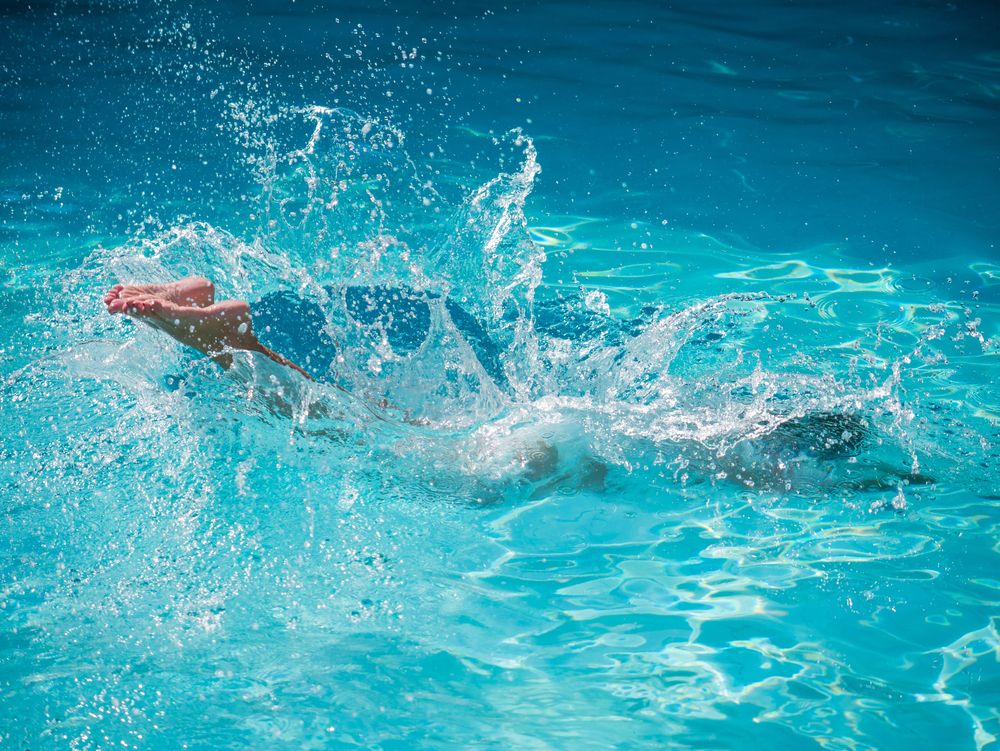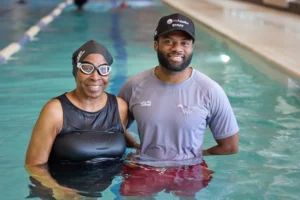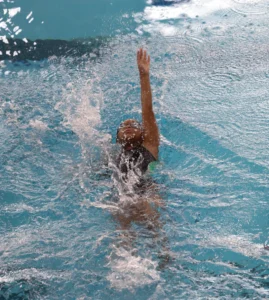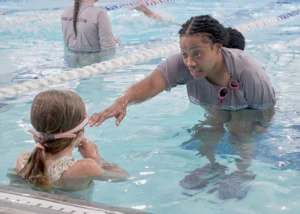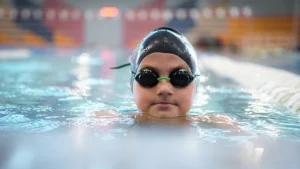Learn the Dos and Don’ts of the Breastroke Kick in this Guide
The breaststroke is one of the most enjoyable strokes in swimming. It’s graceful yet playful. But it’s also one of the most technical strokes.
We’re breaking down the breaststroke technique, common mistakes, and expert tips to help you master this beautiful and fun stroke.
Understanding the Breaststroke
The breaststroke is a symmetrical arm stroke followed by a ‘whip kick.’ It’s the only competitive stroke where the arms recover in the water, and use a distinctive kick.
The breaststroke kick, often called the ‘frog kick,’ is a series of coordinated movements that, when performed correctly, propels you through the water and sets you up for the next cycle of the stroke.
Let’s break it down:
The Arms
- Start in a streamlined position with arms extended forward
- Sweep your hands out just past your shoulders
- Bend at the elbows to initiate the Early Vertical Forearm (EVF) catch
- Take a breath as you complete the pull
- Join your fingertips together and propel your hands forward resuming streamlined position
The Kick
- From the streamline position, bend your knees and bring your heels toward your buttocks
- Turn your feet outward, exposing the insoles of your feet to the water
- Kick out in a circular path, keeping your feet underwater throughout the entire motion
- Accelerate as you kick, creating a ‘whip’ motion- this is what propels you forward
- Quickly bring your legs back together in a streamlined position, squeezing with your heels
The Glide
- After completing the pull there’s a full streamlined pause and after completing the kick there’s a full streamlined pause
- Your pull and your kick should never be happening simultaneously
- Keep your head and eyes looking straight down
Breaststroke timing is important— think ‘pull, glide, kick, glide’ as you’re swimming. As you start to get the hang of it, these motions will become seamless. You’ll develop a feel for the water and know when to kick out and when to bring your head back up.
Common Breaststroke Kick Mistakes
Now that you understand what to look for in your breaststroke, let’s look at some common mistakes and how to avoid them.
Incorrect leg movement
Mistake: Lifting legs too high out of the water during the kick.
Correction: Focus on keeping your feet underwater throughout the entire kick. This helps you push water backward to propel you forward and is also required in competitive swimming. Lifting your feet out of the water in a competition would result in disqualification.
Improper Foot Position
Mistake: Not flexing ankles and turning feet outward.
Correction: Consciously turn your feet outward to expose the insoles. This lets you grab more water with each kick, increasing your propulsion. The inside of your feet should face outward to push the water effectively.
Wide Knee Position
Mistake: Allowing knees to spread too far apart during the kick.
Correction: Keep your knees close together, about shoulder-width apart or slightly narrower. While the knees do bend more in breaststroke than in other strokes, they shouldn’t flail out too wide. This helps maintain a streamlined position and increases the power of your kick.
Lack of Glide
Mistake: Rushing into the next stroke without following through with a full glide…in other words, upper body and lower body moving simultaneously
Correction: After each pull or kick , maintain a streamlined position
Perfecting Your Breaststroke Kick
Here are some drills you can practice in and out of the pool to help you perfect your breaststroke technique:
Dry Land Practice
- Sit on the edge of a chair or the side of the pool and practice leg movements slowly.
- Focus on turning out your feet and keeping your knees relatively close together.
- This helps build muscle memory for the correct kicking motion.
Pool Noodle Drill
- Use a pool noodle under your arms for support in the water.
- Practice the breaststroke kick while keeping your upper body still.
- Focus on the ‘in, out sweep, and then together’ motion of the kick.
- The noodle should be positioned to allow you to breathe easily while focusing on your leg technique.
Slow Motion Swimming
- Perform the entire breaststroke in one exaggerated slow motion movement.
- Pay attention to each phase of the stroke: pull, glide, kick, glide.
- Focus on maintaining alignment between your feet, knees, and hips throughout the motion.
- This helps improve timing and coordination between arm and leg movements.
Two-Kick, One Pull Drill
- Perform two kicks for every one-arm pull.
- This exaggerates the leg motion and helps focus on generating power from your kick.
Underwater Kick Practice
Push off the wall and do several underwater breaststroke kicks before resurfacing. This helps you focus on keeping your breaststroke kick entirely underwater and developing the correct motion without the distraction of breathing or arm movements.
The Importance of ‘Feel’
One of the most important aspects of mastering the breaststroke kick is developing a feel for the water. This means becoming sensitive to how your feet and legs interact with the water during each phase of the kick.
As you practice, pay attention to:
- The resistance you feel against your feet when you turn them outward
- The sensation of ‘grabbing’ the water with your insteps
- The surge of propulsion you get from a well-executed whip kick.
WeAquatics: Where Practice Makes Perfect
Remember, mastering the breaststroke kick takes time and patience. Focus on one aspect at a time and gradually bring all the elements together. The breaststroke is about the feel of the water, so be patient when practicing. It’s normal for this technique to take longer to perfect than other swimming strokes.
WeAquatics is committed to helping swimmers of all levels improve their technique. Our one-on-one Learn-to-Swim lessons with experienced instructors work on all of the strokes as well as the individual goals of our students.

